My day job involves thinking about supporting kids and adults who struggle with mathematics. One of my favorite ways to engage students in mathematics is to play games. When there is a context of a game, the mathematics often takes on a meaningful purpose, and becomes a natural part of the activity. This is a way that parents and kids can actually have fun together as they engage in math. In this post I’m including a few of my favorite games (that involve math) and ideas for differentiation. I haven’t included details on the actual game play, because other videos (often available on the amazon link I provide) do this better than I could. What I focus on here is the mathematics and how to differentiate it for a range of learners.
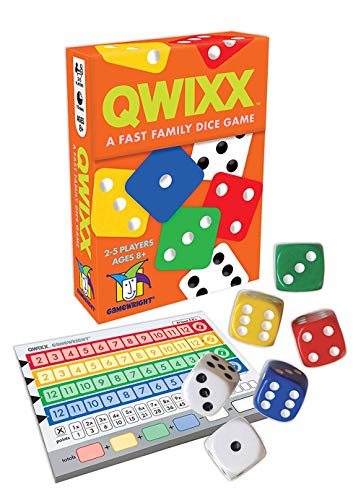
Quixx – This is my favorite game! This game involves reading numbers off dice (subitizing), adding up to 12, addition with regrouping for final score calculation, and probability is heavily implicated in the strategy of the game. There is a new version that uses dry erase boards rather than paper that looks cool.
Differentiation: My third grader still has difficulty adding up to 20, and so when it’s her turn, and she rolls, her job is to calculate the total on the two white dice and announce it for the rest of the players. She has the option of counting each of the dots on the dice, or “seeing” a 5 and 3 and determining the total is 8. Because she can cross off a second number using one of the colored dice, she may solve 8 more addition problems in order to figure out the best move before completing her turn. I will occasionally point out when using a particular colored die might be strategically advantageous, but I generally make her calculate the total.

Quirkle – This game involves counting, matching, spatial reasoning, strategy, and addition for score calculation. When playing this with my 3rd and 4th grader, everyone is in charge of counting up their own points and adding their own scores.
Differentiation: When we played this with a 3-year-old, he was on a team with me and was in charge of making sure we had the right number tiles drawn (6) and he decided which move we would make. (My 3rd and 4th grader delighted in how we often missed the best move). He also helped place and match the tiles when we played. There are 3 sets of each of the color shape combinations (e.g., 3 red circles). On your first time through the game, I would recommend removing 1 complete set of tiles so you have 2 of each color shape combination. It just felt like a better length game. Now we play with all three sets. When my 3rd or 4th graders feel stuck, we sometimes play it with our tiles displayed so we can figure out the best move together.
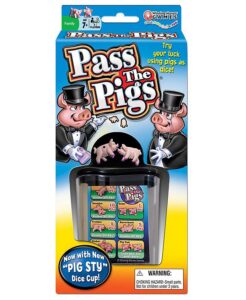
Pass the Pigs – This game is great for practicing mental addition and addition with regrouping for score keeping. As you roll the pigs, you keep a running total of your points in your head (you can use paper or a small white board if that helps), when you are satisfied with your number of points you can stop rolling and add those points to your total. If you pigs-out you lose your running total of points and get zero points for that round. One thing I like about the game is the parent’s strategy about when to stop rolling your pigs can help your child win (which is very motivating, at least for my kids). I would recommend keeping score on a separate scratch sheet of paper, rather than the score sheets that come with the game that are far far too small.
Differentiation: During standard play, the first person to score 100 points wins. I will sometimes modify this target either up or down (and set it with the kid before starting) depending how much stamina I think the kid has. If we change the target during game play, it’s only if both people agree (e.g., if I am first to 100, and the child would like to keep playing to a different target, that’s great! Or if we are both having terrible luck, we might decide to stop at 50).
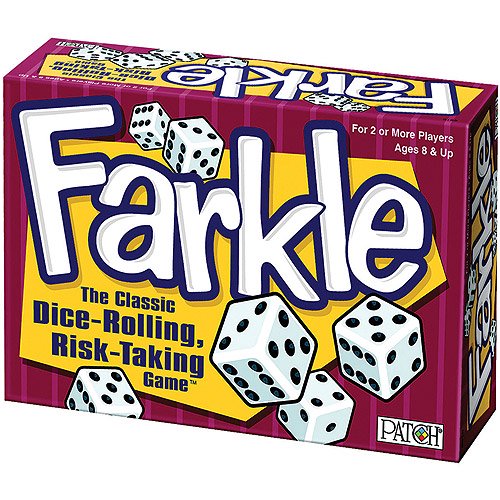
Farkle – This is a great dice game, particularly for students who need to work on addition up to 10,000. This game involves matching, mental addition in the hundreds and thousands, written addition up to 10,000. We generally don’t use the score sheets for this game for anything other than a reference for the amount each dice roll is worth. The amazon video is useless in illustrating how to play the game, so I included a link to this one that is much more helpful!
Differentiation: If students are not yet familiar with thousands, you can divide all point totals by 10 (e.g., a 5 would be worth 5 points rather than 50 point) and play first to 1000.

Set – Quick confession. I’m pretty terrible at Set. The game is great though, and it builds students understanding of classification.
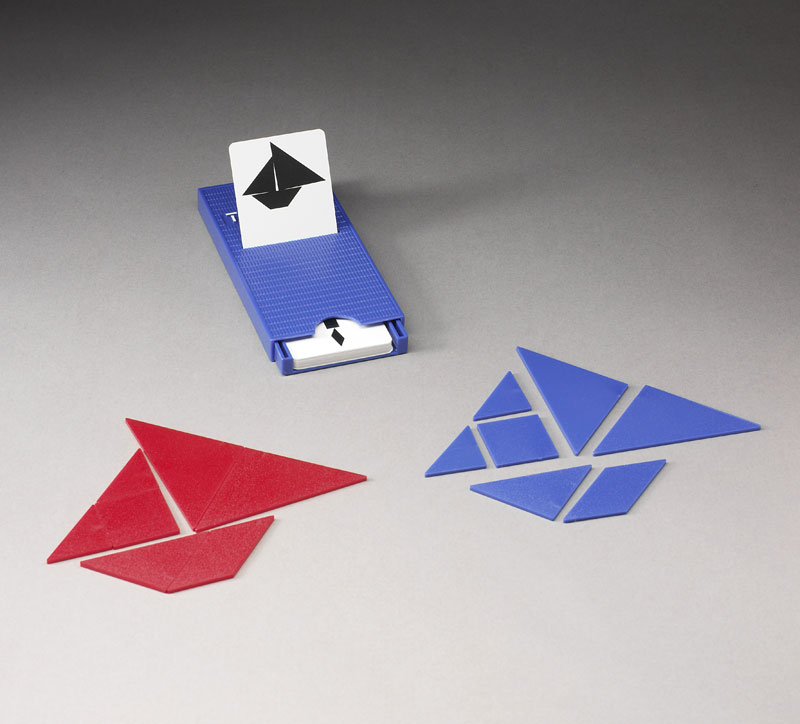
Tangoes – This game involves geometry and spatial reasoning. You take a set of 7 shapes and attempt to create the design on the card.
Differentiation: This can be challenging for adults to solve these cards, so sometimes my daughter will use the answer and try to use her shapes to create the design and I’ll try to figure it out without the answer. Matching to the given design is building an understanding of spatial reasoning.

24 Game – This is a more classic math game. The goal is to create the answer of 24 using the 4 numbers on the card. This game is great for students who need to practice their fluency with basic number facts. For example, if the numbers showing are 9, 2, 5, 3 you could answer (9-5) x 2 x 3 or 9 x 3 -5+2.
Differentiation: There are different level cards (1 dot – 3 dots) and you can play either single digit or double digit 24.
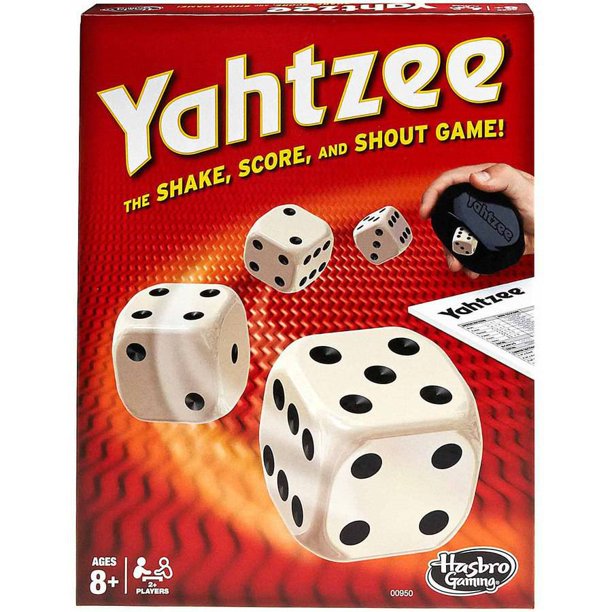
Yahtzee – This game involves a bit of math for the score keeping and calculating point totals – so good for students practicing multiplication and addition. The downside is that the score sheets are necessary and also too small for my liking.
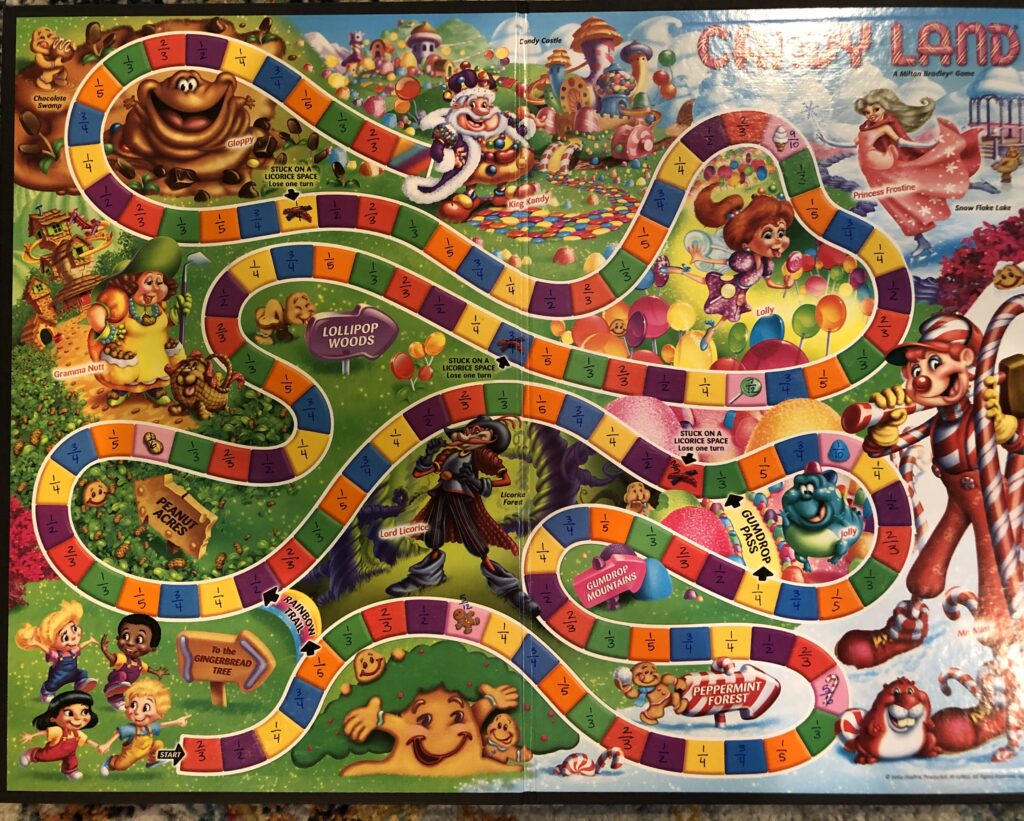
Fraction Land – Ok – this is actually just candy land that I have modified to make it a math game. The idea behind candy land is that when you draw a card there is a colored square on it that tells you the color you move to. You move your game piece to the next spot of that color. Some cards have 2 color squares, and you get to move two squares of that color. There are a few special cards which take you to a specific location on the board (which could be behind you). The same idea applies here, except we use fractions rather than colors to move around the board. If you would like to make this game yourself, you can take your copy of candy land (everyone has one, right?) and then write fractions on the squares accordingly (red = 2/3, purple = 1/2, yellow = 1/4, blue =3/4, orange = 1/5, green= 1/3) Special spots are in order as follows (5/12, 5/6, 1/10, 1/6, 7/12, 9/10).
Differentiation: You can play this game at a variety of different levels and print and use the game cards for your desired level of difficulty (Levels 1-2, level 3, level 4)
- Level 1: For students who are just being exposed to fractions, you can use the fraction cards and play the same way as you would candy land. (Just match fraction card to the fraction on the board).
- Level 2: For students who are starting to work with equivalent fractions, you can have the student create an equivalent fraction that is equal to the fraction they drew and then move two of those spaces. (e.g., you draw 1/3, you draw a picture to show that 1/3 = 2/6, you get to move two 1/3 squares).
- Level 3: This is for students who are familiar with equivalent fractions and want to start working on simplifying fractions (also know back in the day as “reducing” fractions). The player gets to move once for simplifying the fraction, and twice if they generate another equivalent fraction (the open box on some of the game cards indicate which cards you can move twice for generating another equivalent fraction).
- Level 4: In this version the student gets to move once for simplifying a fraction, and gets to move twice for solving a fraction operation problem.
Any card game involving scoring – Any card game that involves scoring is great – whether it’s rummy, canasta, pinochle, cribbage, or bridge. If you need to tally up and count your points, it’s great for kids to practice math. One tip, is that when having students keep score, I always use lined paper or graph paper. If I used lined paper, I flip the lined paper on it’s side, so that the lines help the student keep track of place value. Here’s an example from a farkle game I played with one of my daughters. As you can see I was a big loser here – and my daughter delighted in it. 🙂

Greg Tang Math – Greg tang has a number of different math games, that are actually conceptually grounded and help students understand and think about the mathematics. You can order these games online or play many of the games electronically on the site. I prefer the hard copies of the games, because time isn’t such a factor – but beating the clock is motivating to some kids. The differentiation is built in, because you can select different levels within the games.